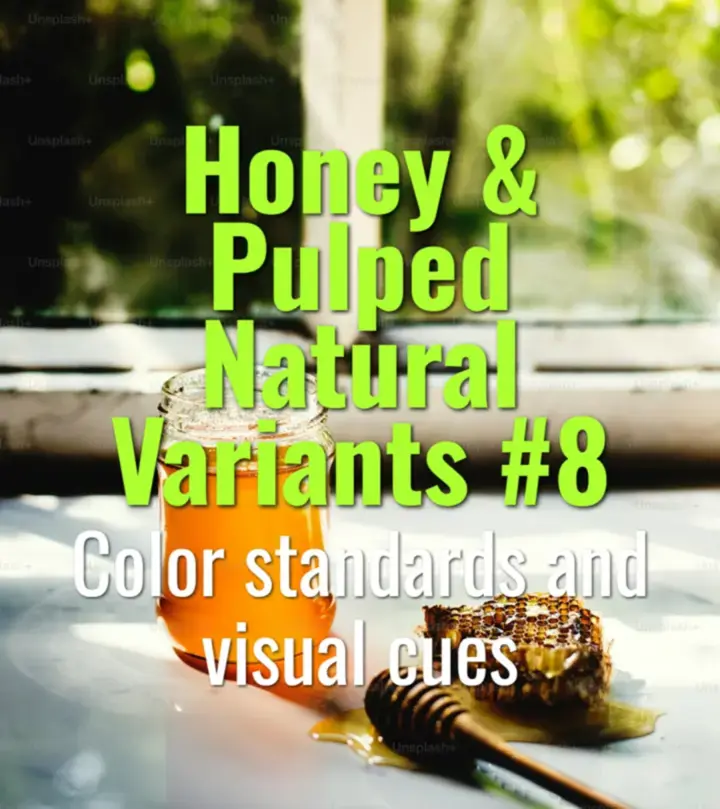Color standards and visual cues
This topic explains how color standards and visual cues are used to identify honey process types (white, yellow, red, black), how they develop during drying, and why they matter for consistency and quality assurance.
- Coffee Basics Nerds
- 2 min read
Article 8 of 12 in Honey & Pulped Natural Variants/

Why Color Matters
- Honey processing is often categorized by bean color during drying.
- Visual cues help farmers and buyers distinguish between white, yellow, red, and black honey lots.
- Provides an accessible standard when formal mucilage measurement tools aren’t available.
Color Standards by Honey Type
White Honey
- Beans appear light beige or pale yellow early in drying.
- Minimal mucilage → quick transition to parchment-like color.
- Indicates clean, washed-like character.
Yellow Honey
- Beans dry to a bright golden-yellow hue.
- Moderate mucilage presence.
- Visual sign of balance between clarity and sweetness.
Red Honey
- Beans turn deep reddish-brown as sugars caramelize.
- High mucilage retention slows drying.
- Suggests syrupy body and fruit-forward cup.
Black Honey
- Beans look dark brown to nearly black, sticky for much of drying.
- Maximum mucilage and slowest drying under shade.
- Indicates winey, heavy-bodied flavor profile.
Visual Cues During Drying
- Stickiness: Higher mucilage beans stay sticky longer (red/black).
- Gloss: Red/black honey beans often shiny due to sugar concentration.
- Uniformity: Even coloration across drying beds indicates well-managed processing.
Importance of Visual Monitoring
- Helps workers adjust turning frequency and bed thickness.
- Early identification of uneven drying or fermentation risk.
- Serves as a practical quality control tool for smallholders without lab instruments.
Limitations
- Color perception varies under different light conditions.
- Not a precise scientific standard—must be paired with moisture tracking.
- Market descriptions can be subjective (e.g., “red honey” in one region may differ from another).
Lasting Importance
Color standards and visual cues provide farmers with a practical, low-cost method to manage honey processing. While not exact science, they remain vital for communicating process identity, guiding drying decisions, and signaling cup profile expectations in specialty markets.
You might also like:
- Tags:
- Lasting Importance
- Flavor Profile
- Quality Control
- Specialty Markets
- Uneven Drying
- Cup Profile
- Red Black
- Low Cost
- Black Honey
- Fruit Forward
- Clarity Sweetness
- White Yellow
- Honey Processing
- Turning Frequency
- Drying Beds
- Red Honey
- Yellow Honey
- Bed Thickness
- Visual Cues
- Yellow Red
- Slows Drying
- Measurement Tools
- Mucilage Retention
- Bean Color
- Syrupy Body
- White Honey